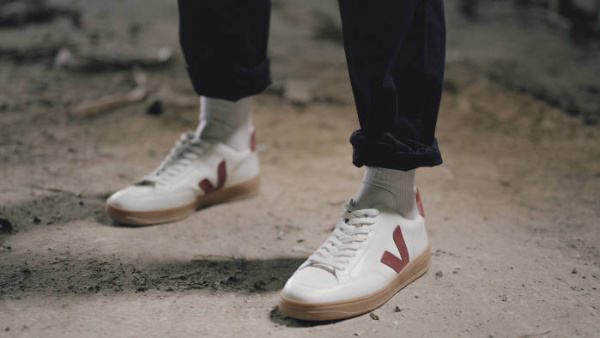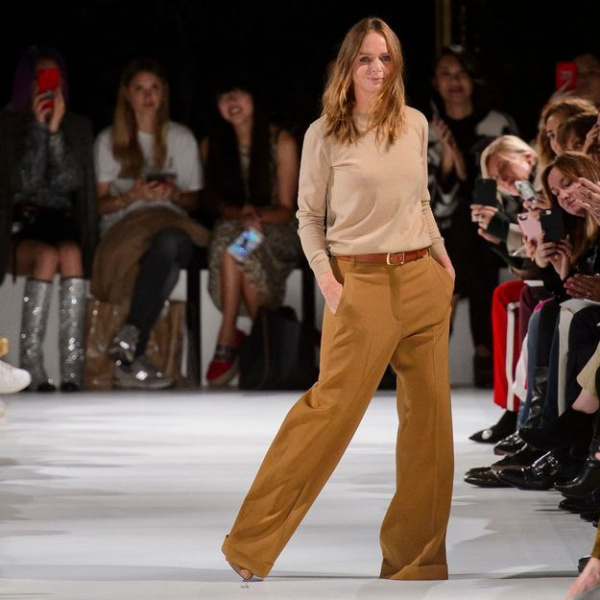
Not all vegan leather is made the same, look for innovative materials made from pineapple or cactus leather. Image A_C
- Fashion
How to shop for cruelty free fashion
The ins and outs of animals in the fashion world
By Green + Simple sustainable fashion expert Valentina Zarew
We know the fashion industry relies heavily on nature in order to produce the wonderful (and hopefully very well looked after and cherished) items in our closets. Faced with the events Climate Change brings – the floods, fires, and other extreme weather events, it’s hard to turn a blind eye to how our industry is a contributor; however, it is also important to consider the impacts the fashion and textile industry have on animals. In 2020, Four Paws International estimated that over two billion animals were used in the global (wool, fur, and leather) fashion industry each year.
In 2021 research by Good on You and Four Paws International found that despite the rapidly growing demand for more animal-friendly fashion, less than 30 per cent of brands source certified wool and only 57 per cent have an animal welfare policy at all.
It has long been known that the treatment of animals for their fur and skins has been non-humane, coupled with the growing research and data emerging around the high impact animal-derived materials have on the planet (GHG emissions), is it worth considering alternatives?

Veja, a well known brand innovating the production of vegan sneakers
Wool, it can be complicated
The skins and fur of animals have been used for centuries to keep us warm, and cosy. A woollen jumper is often a staple for the cooler months. Cosy and comfortable, wool is breathable and durable, and when looked after properly can last for quite some time. Often marketed as a ‘natural’ fibre, that is biodegradable (which it is, but be wary of this as dyes, and processing need to be considered along the supply chain as they can leach into the environment), there are concerns around animal welfare.
A common practice, being phased out by responsible producers, amongst wool growers, is a process called ‘mulesing.’ Removing strips of skin around the tail of a sheep, in the aim of preventing a parasitic infection called flystrike. It’s painful and often administered without pain relief.
It’s important to look for responsible certifications, such as the Responsible Wool Standard, which assures that the fibre is responsibly sourced from an animal welfare perspective, as well as addressing progressive land management and social welfare for workers.
Some brands sourcing wool responsibly include Kathmandu, Eileen Fisher, and Henry & Grace for the bubs.

Kathmandu advocate the responsible sourcing of wool for all their garments
WHO NEEDS FUR?
Who could’ve missed Billie Eilish at the Met Gala? Not only did she look fabulous in Oscar de la Renta, but she was also a catalyst for the brand ditching fur, refusing to wear any of their garments, unless they made a promise to do so.
The animal welfare practices tied to the fur industry are horrific. According to PETA, 85 per cent of the fur industry’s skins come from fur factory farms, where animals are held captive, in small spaces, and often electrocuted, or, skinned alive. Not only does the industry disrespect the animals, the processing to turn the fur into your ‘second-skin’ requires toxic-chemicals and heavy processing, putting strain on the environment.
My recommendation is to take Stella McCartney’s lead and stay away from fur, unless vintage , and then that’s a moral choice you make about how you feel regarding aforementioned production.

Stella McCartney’s brand was created around her vegan philosophies
Leather, a personal ethical choice
Leather is generally a bi-product of the meat industry, as the hides are sold to tanneries for processing into leather. There are considerate animal husbandry practices that need to be taken into consideration, and again the toxicity of the chemicals, water and energy utilised to treat the hides. If purchasing leather, look for brands that follow the Leather Working Group or work with recycled leathers.
Australian brand R&M Williams launched a campaign last year, calling on its community to trade in their old boots for a voucher, and restored a number of them, making them available for re-sale via their Instagram channel.

RM Williams has a leather return program to love
Faux fur and faux leather
These animal derived fibres are being replaced by conventional synthetics, which rely heavily on the coal industry. We have seen a move towards recycled synthetics, for example polyester and polyamide made from rPET, which are a better alternative to virgin. They use less energy and water, however there is one major factor that hasn’t been taken into consideration – the shedding of microplastics. These microplastics have been found in our oceans and drinking water. If you do purchase faux fur items, or any garments that contain polyester, look for certified recycled, wash less and try a Guppy Friend wash bag.
Innovations are being developed in both the leather and plastics industry. Cult shoe brand Veja offers a collection of vegan shoes, of which are partly made from food waste, and luxury brand Gucci have also jumped on the bandwagon, with their Demetra sneaker range.
We are also seeing a rise in cactus leather, and pineapple leather, which are made from – well, exactly that, plants. These bio-based alternatives to leather are at this stage, less durable than conventional, however the research and development process continues, and we are hoping to see improvements.
Two personal favourites in this space are Australian accessory brand A_C and Karl Lagerfield’s collaboration with Amber Valletta (of which a portion of sales goes to Ocean Clean Up).
When shopping myself, I look for innovative materials, but also recently purchased a locally based pair of leather sandals and contacted the brand to share some details about how they could work to implement responsible practices to minimise their impact.
Overall, you can shop cruelty free, and the industry is making moves to transition towards more responsible practices.
Valentina’s tips for shopping cruelty-free
- Look for Animal Welfare policies when visiting the website of your favourite brands
- Look for verified certifications
- Avoid real fur – lean into vintage of faux
- Buy a washing machine that has a filter installed to capture microplastics
- Look for brands that are leaning into innovative leather alternatives
Valentina is a sustainability expert, with among other accreditations a certificate of sustainability from the University of Bath. She is focussed on working with the brands of the future to help shape their strategy, sustainability framework, stories and partnerships. You can connect with her at [email protected], or follow her on Instagram. @valya___z.
Love her work? You can support her here.
RELATED: Questions my friends ask me about sustainable fashion
RELATED: Who made your clothes?
